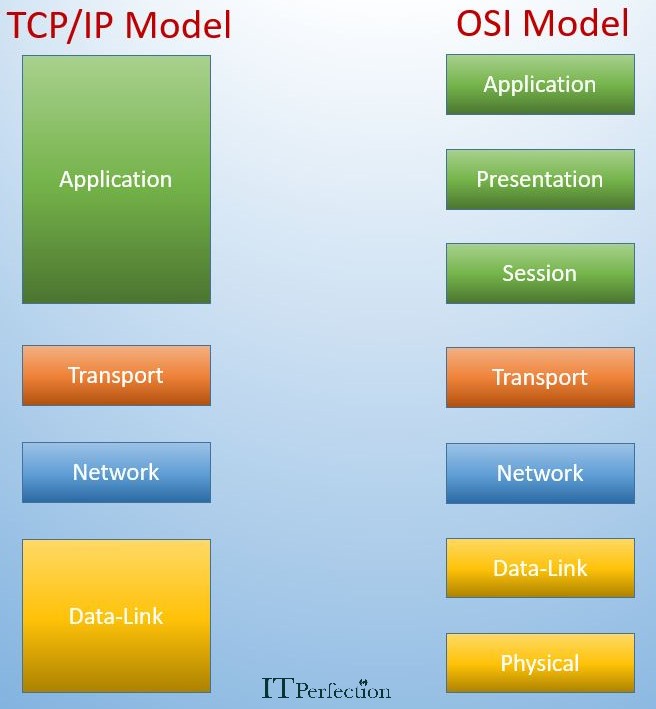TCP/IP Model
In this part of this tutorial, we’ll take a look at TCP-IP model to help you understand the different aspects of requirements for TCP-IP model. The Transmission Control Protocol/Internet Protocol (TCP/IP) Model is similar to the OSI Reference Model but consists of only four layers:
- Application
- Transport
- Internet
- Link
The designers of the OSI Reference Model took responsibility of ensuring that the TCP-IP protocol suite fit their model because of its established deployment in networking. The following figure represents a comparison between the TCP-IP model and the OSI model.

In this figure, the related layers of the two models have the same color. As you can see, the three layers of application, presentation, and session in the OSI model are grouped into only one layer (the application layer) in the TCP/IP model.
The internet layer in the TCP/IP model is equivalent to the network layer in the OSI model. Finally, the Link layer in the TCP/IP model also performs the functions of the two layers of data-link and physical in the OSI model.
In TCP/IP model:
- Application Layer: Consists of network applications and processes.
- Transport Layer: Provides end-to-end delivery and corresponds to the OSI Transport Layer. TCP and UDP are the main protocols of this layer.
- Internet Layer: Defines the IP datagram and routing.
- Link Layer: Contains routines for accessing physical networks.
